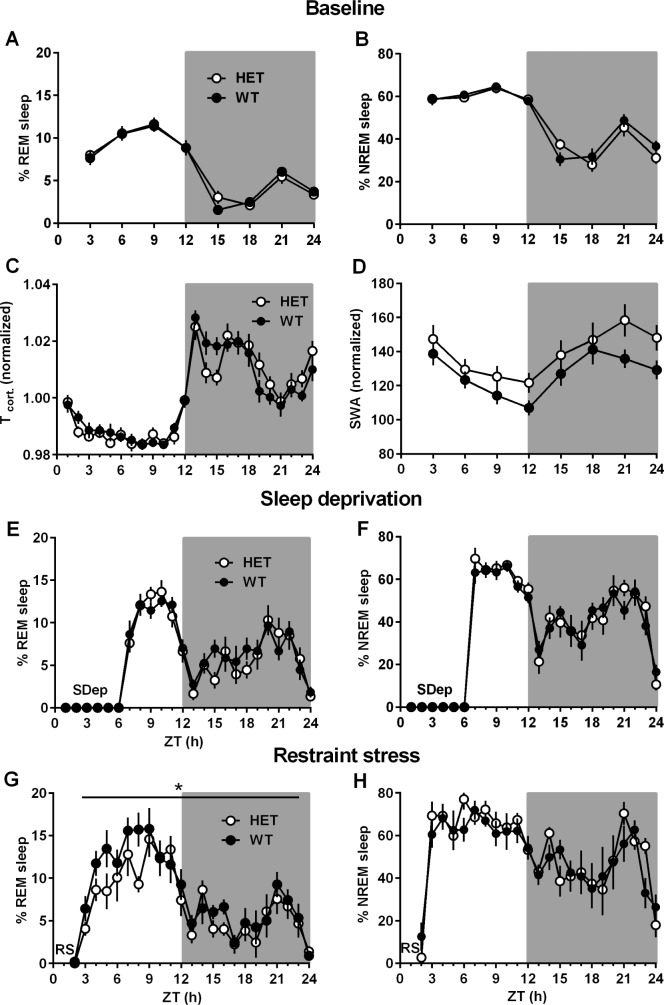Figure 2.
Comparison of spontaneous sleep (baseline) and recovery sleep after challenging conditions between heterozygous Cacna1c knockout mice (HET, closed symbols; n = 11) and wild-type littermates (WT, open symbols; n = 12). (A) Rapid eye movement (REM) sleep (%), (B) nonrapid eye movement (NREM) sleep (%), (C) normalized cortical brain temperature, and (D) normalized slow wave activity (SWA) during NREM sleep under baseline condition. (E,G) Recovery responses of REM sleep and (F,H) NREM sleep after 6 h of sleep deprivation (SDep) or after 1 h of restraint stress (RS) initiated from the beginning of the light period, respectively. Significant effects of Cacna1c haploinsufficiency on sleep were found in REM sleep during recovery after restraint stress (G); HET mice showed lower REM sleep responses, compared to those in WT mice. All values are mean ± standard error of the mean. Significant differences between genotypes: *P < 0.05 (two-way analysis of variance).

